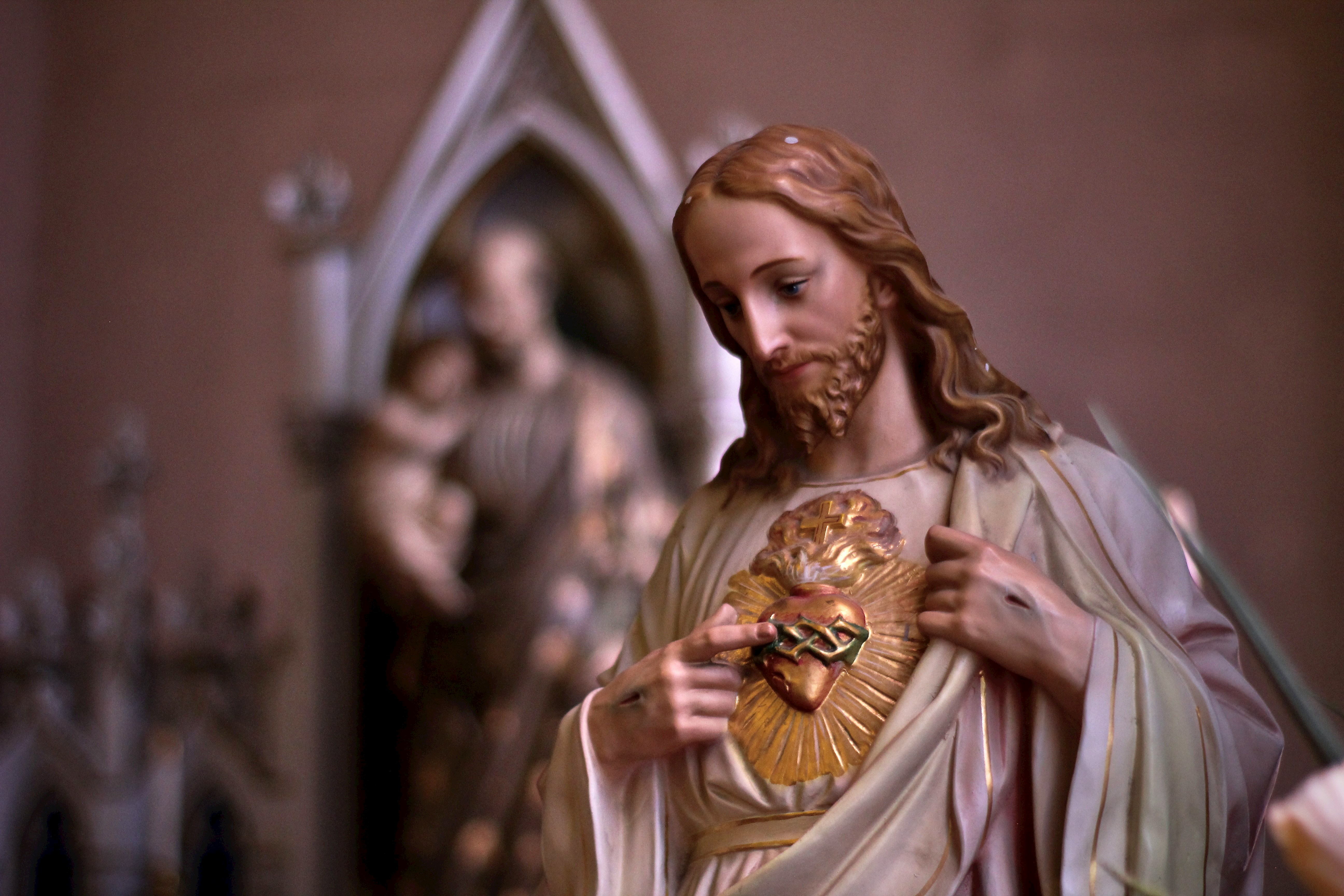Jesus is the divine Sower who sows the seed of his word in the community of followers that he calls apart from the world. The seed takes root in us when we hear the word of God. To hear, to really hear, to absolutely hear the voice of God and not the myriad other distracting voices that call out for our attention, we must do something that is very difficult. We must cultivate silence.
Most retreatants discover that on the first day or so of a retreat, in the quiet of the retreat house with nothing to do except listen to God’s voice, that a thousand other voices—strident and loud—all of a sudden appear, clamoring for attention. Listening to those stories and letting them go can be an essential first step in creating the silent soil that is able to receive God’s Word. But we don’t need to be on a retreat to enter into this atmosphere of silent recollection. It is possible to spend a short period every day as a mini-retreat to cultivate the soil of our heart.
We can start by disconnecting from social media and our phones. At first it may seem frightening to be cut off from the torrent of words and images that flood our media-saturated consciousness. We might feel nervous as we wait in silence for the work of the divine Sower. Our soul may feel fragmented and untilled and unprepared for the seed. In patience we will acquire the stillness that longs to receive the fullness of God’s Word. It is a spiritual art and discipline to be able to distinguish the harmony of God’s voice from the discord of worries, temptations, desires, and ambitions. This discernment comes precisely from the experience of entering into silence.
Pope Benedict XVI said, “‘Only in silence can the word of God find a home in us, as it did in Mary, woman of the word and, inseparably, woman of silence’ (Verbum Domini, n. 66). This principle — that without silence one does not hear, does not listen, does not receive a word — applies especially to personal prayer as well as to our liturgies: to facilitate authentic listening, they must also be rich in moments of silence and of non-verbal reception” (General Audience, March 7, 2012).
How does God desire you to open wide your heart in silence? Ask the Lord what practical steps he desires you to take to recover this contemplative dimension of life.
Jesús es el Sembrador divino que siembra la semilla de su palabra en la comunidad de seguidores a los que llama aparte del mundo. La semilla echa raíces en nosotros cuando escuchamos la palabra de Dios. Para escuchar, para escuchar de verdad, para escuchar absolutamente la voz de Dios y no la miríada de otras voces que nos distraen y llaman nuestra atención, debemos hacer algo que es muy difícil. Debemos cultivar el silencio.
La mayoría de los participantes de los retiros descubren que en el primer día del retiro, en la tranquilidad de la casa de retiro, sin nada que hacer menos escuchar la voz de Dios, de repente aparecen mil otras voces, estridentes y fuertes, clamando por su atención. Escuchar esas historias y dejarlas pasar de la mente puede ser un primer paso esencial para crear tierra silenciosa que sea capaz de recibir la Palabra de Dios. Pero no es necesario estar de retiro para entrar en este ambiente de recogimiento silencioso. Es posible pasar unos momentos cada día como un mini retiro para cultivar la tierra de nuestro corazón.
Podemos empezar desconectándonos de las redes sociales y de nuestros teléfonos. Al principio puede parecer aterrador verte aislado del torrente de palabras e imágenes que inundan nuestra conciencia, que normalmente está saturada de medios de comunicación. Podríamos sentirnos nerviosos mientras esperamos en silencio la obra del divino Sembrador. Nuestra alma puede sentirse fragmentada, sin labrar y sin preparación para la semilla. Con paciencia adquiriremos la quietud que anhela recibir la plenitud de la Palabra de Dios. Es un arte y una disciplina espiritual poder distinguir la armonía de la voz de Dios de la discordia de las preocupaciones, las tentaciones, los deseos y las ambiciones. Este discernimiento proviene precisamente de la experiencia de entrar en el silencio.
El Papa Benedicto XVI dijo: “…sólo en [el silencio] la Palabra puede encontrar morada en nosotros, como ocurrió en María, mujer de la Palabra y del silencio inseparablemente» (Verbum Domini, n. 66). Este principio —que sin silencio no se oye, no se escucha, no se recibe una palabra— es válido sobre todo para la oración personal, pero también para nuestras liturgias: para facilitar una escucha auténtica, las liturgias deben tener también momentos de silencio y de acogida no verbal.” (Audiencia general, 7 de marzo de 2012).
¿Cómo desea Dios que abras de par en par tu corazón en el silencio? Pregúntale al Señor cuáles pasos prácticos desea que tomes para recuperar esta dimensión contemplativa de la vida.

Sr. Kathryn James Hermes, FSP, is an author and offers online evangelization as well as spiritual formation for people on their journey of spiritual transformation and inner healing. Website: www.touchingthesunrise.com My Books: https://touchingthesunrise.com/books/
Public Facebook Group: https://www.facebook.com/groups/srkathrynhermes/ HeartWork Spiritual Formation Group: https://touchingthesunrise.com/heartwork/
Feature Image Credit: ThePixelman, https://pixabay.com/photos/girl-miss-sea-bulgaria-seagull-583917/


 Tami Urcia grew up in Western Michigan, a middle child in a large Catholic family. She spent early young adulthood as a missionary in Mexico, studying theology and philosophy, then worked and traveled extensively before finishing her Bachelor’s Degree in Western Kentucky. She loves tackling projects, finding fun ways to keep her little ones occupied, quiet conversation with the hubby and finding unique ways to love. She works full time at Diocesan, is a guest blogger on
Tami Urcia grew up in Western Michigan, a middle child in a large Catholic family. She spent early young adulthood as a missionary in Mexico, studying theology and philosophy, then worked and traveled extensively before finishing her Bachelor’s Degree in Western Kentucky. She loves tackling projects, finding fun ways to keep her little ones occupied, quiet conversation with the hubby and finding unique ways to love. She works full time at Diocesan, is a guest blogger on 
 Deacon Dan Schneider is a retired general manager of industrial distributors. He and his wife Vicki have been married for over 50 years. They are the parents of eight children and thirty-one grandchildren. He has a degree in Family Life Education from Spring Arbor University. He was ordained a Permanent Deacon in 2002. He has a passion for working with engaged and married couples and his main ministry has been preparing couples for marriage.
Deacon Dan Schneider is a retired general manager of industrial distributors. He and his wife Vicki have been married for over 50 years. They are the parents of eight children and thirty-one grandchildren. He has a degree in Family Life Education from Spring Arbor University. He was ordained a Permanent Deacon in 2002. He has a passion for working with engaged and married couples and his main ministry has been preparing couples for marriage.


 Kathryn Mulderink, MA, is married to Robert, Station Manager for Holy Family Radio. Together they have seven children (including Father Rob), and eight grandchildren. She is President of the local community of Secular Discalced Carmelites and has published five books and many articles. Over the last 30 years, she has worked as a teacher, headmistress, catechist, Pastoral Associate, and DRE, and as a writer and voice talent for Catholic Radio. Currently, she serves the Church by writing and speaking, and by collaborating with various parishes and to lead others to encounter Christ and engage their faith. Her website is
Kathryn Mulderink, MA, is married to Robert, Station Manager for Holy Family Radio. Together they have seven children (including Father Rob), and eight grandchildren. She is President of the local community of Secular Discalced Carmelites and has published five books and many articles. Over the last 30 years, she has worked as a teacher, headmistress, catechist, Pastoral Associate, and DRE, and as a writer and voice talent for Catholic Radio. Currently, she serves the Church by writing and speaking, and by collaborating with various parishes and to lead others to encounter Christ and engage their faith. Her website is 



 Mike Karpus is a regular guy. He grew up in Michigan’s Upper Peninsula, graduated from Michigan State University and works as an editor. He is married to a Catholic school principal, raised two daughters who became Catholic school teachers at points in their careers, and now relishes his two grandchildren, including the older one who is fascinated with learning about his faith. He also has served on a Catholic school board, a pastoral council and a parish stewardship committee. He currently is a lector at Mass, a Knight of Columbus, Adult Faith Formation Committee member and a board member of the local Habitat for Humanity organization. But mostly he’s a regular guy.
Mike Karpus is a regular guy. He grew up in Michigan’s Upper Peninsula, graduated from Michigan State University and works as an editor. He is married to a Catholic school principal, raised two daughters who became Catholic school teachers at points in their careers, and now relishes his two grandchildren, including the older one who is fascinated with learning about his faith. He also has served on a Catholic school board, a pastoral council and a parish stewardship committee. He currently is a lector at Mass, a Knight of Columbus, Adult Faith Formation Committee member and a board member of the local Habitat for Humanity organization. But mostly he’s a regular guy.




 David Dashiell is a freelance author and editor in Nashville, Tennessee. He has a master’s degree in theology from Franciscan University, and is the editor of the anthology
David Dashiell is a freelance author and editor in Nashville, Tennessee. He has a master’s degree in theology from Franciscan University, and is the editor of the anthology